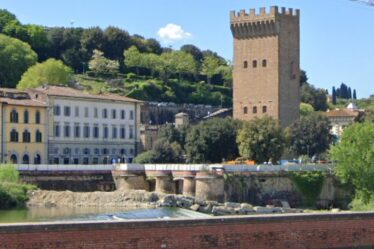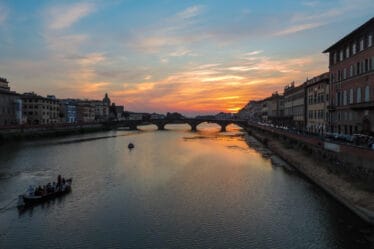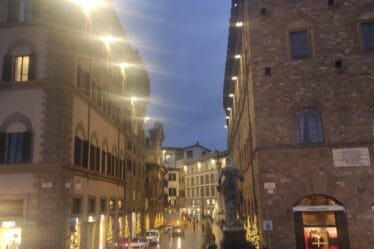
The Forgotten Fury of Florence Blasphemy & Blood and Justice
A Night of Sacrilege
Blasphemy Blood and Justice begins in the narrow alleys of Florence, wrapped in shadows as night silences the city. It is the year 1493. Bartolomeo de Cases, a young and impulsive man, paces beneath the arches of Orsanmichele — the beating religious heart of the city. In a moment of rage, despair, or possibly drunken madness, he draws a small blade. Then, with deliberate audacity, he strikes the sacred image of the Virgin Mary, carved in marble and revered by generations.
This was no simple act of vandalism. In the deeply Catholic Florence of the late 15th century, it was a mortal outrage, a direct assault on the divine — and one that would not go unanswered.
A Swift Arrest and a Brutal Confession
The sound of steel on stone echoes louder than thunder in a city built on faith. Bartolomeo is caught almost immediately. Fear seizes him, and words tumble out in a flood of confessions. He admits guilt—too much, too fast. The Bargello, Florence’s feared chief of police, wastes no time.
Under the weight of justice — or vengeance — Bartolomeo is condemned. The initial punishment is to be public, calculated, and exemplary: mutilation as a lesson to all who might dare challenge the sanctity of the Church or the city’s sacred icons.
But Florence, burning with religious fervor, has other plans. a revenge of blasphemy and blood, and Justice.
Mob Justice in Piazza Santa Croce
The cart carrying Bartolomeo halts in Piazza Santa Croce, where a seething crowd awaits. The air trembles with hatred, and the guards, sensing the storm, retreat. What follows is a violent eruption of fury: hands, fists, stones, and clubs rain down on the condemned man.
Florence becomes judge, jury, and executioner.
The people drag Bartolomeo’s mangled body through the streets — a grim trophy of civic vengeance — all the way to Porta Romana. His death, brutal and unsanctioned, is both horrifying and symbolic: no law can protect those who defile the sacred.
A Warning Carved in Stone
When dawn breaks, it finds silence—and a chilling memorial.
On the wall of Orsanmichele, carved into the stone beneath the damaged statue of the Virgin, an inscription is left as an eternal warning:
“HANC FERRO EFFIGIEM PETIIT IVDAEVS ET INDEX IPSE SVI VVLGO DILANIATVS OBIT MCCCCLXXXXIII”
(A Jew, confessed of his crime, struck this image with a knife and, torn to pieces by the crowd, died in 1493.)
This sentence has sparked controversy for centuries. While many believe Bartolomeo de Cases was Christian, the Latin inscription calls him “Judaeus” — a Jew — possibly as a way to further vilify his actions or simply reflect the anti-Semitic climate of the time. Indeed, the conflation of religious defiance with ethnic identity was a common tool of propaganda in Renaissance Europe.
Even today, Blasphemy & Blood and Justice echoes in the hearts of those who pass beneath Orsanmichele’s arches. It’s a story of faith, vengeance, and the fine line between justice and mob rule.
Historical Reflections and Controversy
This event is not merely a footnote in Florentine history; it is a lens through which we glimpse the volatile blend of religion, law, and public sentiment during the Renaissance. Whether or not Bartolomeo was Jewish remains disputed. Some scholars argue that his religious identity may have been distorted to justify his fate and demonize an already marginalized community.Blasphemy & Blood and Justice.
Today, historians and cultural institutions debate the ethics of preserving such inscriptions without context. Should it remain untouched as a relic of the past? Or should it be accompanied by explanations to avoid perpetuating stereotypes and hatred?
Learn More About the Story
To explore this event and its broader implications further, you can visit:
- 🏛️ Orsanmichele Church – A Sacred Civic Space
- 📜 Florentine Justice in the Renaissance
- 📚 The Jewish Presence in Renaissance Florence
Final Thoughts
Florence is often remembered for its beauty, its art, and its humanist thinkers. But within its stones lie darker tales — stories like that of Bartolomeo de Cases. They remind us that the past was never just golden; it was human, brutal, and conflicted.
Blasphemy & Blood and Justice is more than a tale of punishment — it’s a mirror reflecting the soul of a city torn between piety and wrath.
And as long as the inscription remains, Blasphemy & Blood, and Justice continues to speak, carved into the very bones of Florence.



